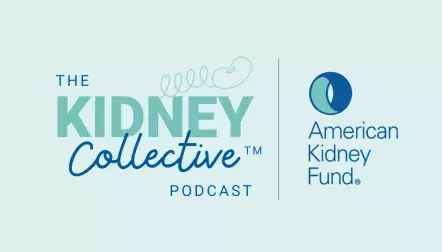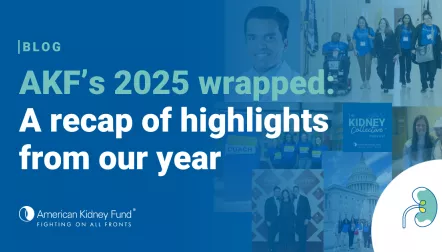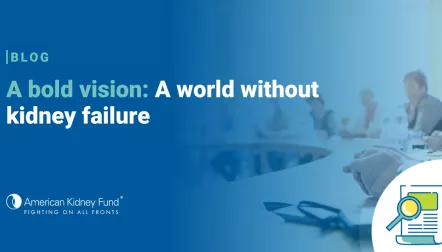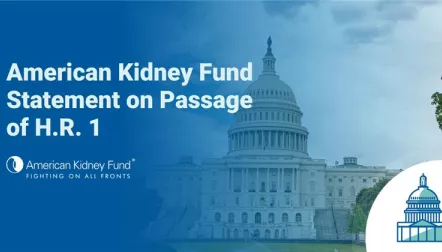
Blog post
Proposed changes to the Affordable Care Act in Congressional budget reconciliation legislation: How they could impact coverage and costs

Note: This blog post contains a number of insurance and ACA-related terms that may not be familiar to everyone. To help you understand the ACA provisions in this bill, we have included a glossary at the end to explain those terms.
On May 22, the U.S. House of Representatives passed H.R. 1, titled the "One Big Beautiful Bill Act (OBBA)," through the budget reconciliation process. The bill is now being considered in the Senate. The legislation includes significant changes to the Affordable Care Act (ACA) marketplaces, which saw a record 24 million people enroll in health coverage for 2025. The nonpartisan Congressional Budget Office has estimated that the ACA changes in the House-passed OBBA would lead to nearly 4 million more people without insurance over the next 10 years. In this blog post, we explain how certain ACA provisions would change, and what that could mean for enrollment and consumer costs.
Open enrollment period
How it works now
States must have an annual open enrollment period (OEP) that, at a minimum, lasts from Nov. 1 to Jan. 15. Some state-based marketplaces (SBM) have longer open enrollment periods.
How it would change under OBBA
All states, including those that operate an SBM, would be required to have an OEP that ends a month earlier, on Dec. 15. This change would go into effect for the 2026 OEP.
Impact
A shorter OEP would likely lead to lower enrollment and loss of coverage, particularly among healthier people. In 2025, about 40% of enrollees, or 10 million people, selected plans after Dec. 15. For many people, the end of the calendar year is a very busy time and having an OEP that extends into January allows them more time to consider their options, factor in any changes to their circumstances or health needs and enroll in a different plan or re-enroll in their current plan. The experience of SBMs with an OEP into January have seen increased consumer interest in enrollment. Also, consumers who enroll later in the OEP tend to be healthier than those who enroll earlier, which helps ensure a balanced risk pool and stable premiums for all enrollees.
Low-income special enrollment period
How it works now
People residing in states that use Federal Facilitated Marketplaces (FFMs) and who make no more than 150% of the federal poverty level (FPL) can apply for a monthly special enrollment period (SEP) to sign up for coverage. States operating SBMs can also offer SEPs that are based on the relationship of a person's income to the poverty line. People who qualify for the low-income SEP are eligible for premium tax credits and cost-sharing reductions (CSRs).
How it would change under OBBA
The low-income SEP would be eliminated and all marketplaces, including SBMs, would no longer be able to offer SEPs that are based on the relationship of a person's income to the poverty line. These changes would be effective for plan years starting on or after Jan. 1, 2026. Additionally, anyone who enrolled in a plan through the low-income SEP or who may enroll between now and Jan. 1, 2026, would no longer be eligible for premium tax credits or CSRs.
Impact
These changes would likely lead to lower enrollment and loss of coverage. In 2025, 47% of ACA marketplace enrollees had an income of less than 150% FPL, making up the largest share of all marketplace enrollees by household income. The low-income SEP was implemented to provide an additional opportunity for households with projected incomes at or below 150% FPL to enroll in low-cost coverage. It has been successful in enrolling individuals who are eligible but not enrolled in coverage. Additionally, the monthly SEP for low-income consumers has been an important tool to ensure continued coverage for those who are transitioning from Medicaid or Children's Health Insurance Program (CHIP) coverage and into other coverage.
Verifying personal information
How it works now
Enrollees provide and attest to their information about their age, address, household size, citizenship status and estimated income for the coming year. That information is electronically verified against Internal Revenue Service, Social Security Administration, Department of Homeland Security, and state Medicaid databases. If there is a mismatch in the information provided by the enrollee and federal databases, enrollees can retain their coverage and premium tax credits for up to 90 days while they submit verification documents.
How it would change under OBBA
There would be additional triggers that would require full income verification by the ACA marketplaces, and the window of time for enrollees to verify their household income with documentation would be shortened by 60 days. These changes would be effective for plan years on or after Jan. 1, 2026.
Starting in 2028, consumers must provide — and marketplaces must verify — income, immigration status, health coverage status, place of residence, family size and any other information that the Secretary of Health and Human Services (HHS) deems necessary before coverage. Consumers can still enroll in a plan but cannot receive premium tax credits or CSRs until after their eligibility is verified. ACA marketplaces would be required to establish a new pre-enrollment verification process that begins Aug. 1 of each year to begin verifying eligibility for the following year.
Impact
These changes would create significant administrative barriers to enrollment, likely leading to lower enrollment and loss of coverage. ACA marketplaces already have to verify that the information provided by enrollees is accurate. If there are discrepancies between that information and federal databases, there is a process in place that ensures enrollees can maintain their coverage and continue receiving premium tax credits while it gets sorted out. That means people can keep seeing their doctors and taking their medications. The changes in the OBBA that would require a pre-enrollment verification process that starts in August — three months before open enrollment for coverage that begins the next calendar year — would make it more difficult for consumers to enroll in coverage. This is especially true for consumers who may have jobs in which their income can vary significantly from month to month, which makes it difficult to verify in August what your income will be next year.
Automatic reenrollment
How it works now
For enrollees who do not proactively change or reenroll in their ACA plan, they will be automatically reenrolled in their current plan. If their current plan will no longer be available the next year, they will be automatically reenrolled in a similar plan with the same insurer, or if their current insurer is not offering a similar plan the next year, then a comparable plan with a different insurer. For enrollees currently enrolled in a bronze level plan and eligible for CSRs, marketplaces are allowed to automatically reenroll them into a silver level plan, under certain circumstances. Specifically, the silver plan must be from the same issuer, have the same provider network, and have a lower or equivalent net premium after premium tax credits.
How it would change under OBBA
Starting in 2028, automatic reenrollment would effectively be eliminated, due to the pre-enrollment verification requirements described above.
Impact
Eliminating automatic reenrollment will likely lead to lower enrollment and loss of coverage. In 2025, 45% of all marketplace enrollees (over 10 million people) were automatically reenrolled in their same plan or a similar plan from the previous year. Automatic reenrollment helps prevent gaps in coverage. For healthier people who don't use many health care services, automatic reenrollment provides an easier way to maintain their coverage while also ensuring a balanced risk pool.
Premium underpayments and start of coverage
How it works now
Enrollees can still have their coverage started if at least 95% of their first premium payment is paid. Insurers consider enrollees to have paid their full premium in a given month if they have paid at least 98% of their premium or have an unpaid remainder of $10 or less. Insurers cannot deny coverage if an enrollee failed to pay premiums for an old policy.
How it would change under OBBA
Insurers would be allowed to require full payment of the first month's premium for coverage to start and full payment to be paid in a given month to retain coverage. Insurers would be allowed to require full payment of any unpaid, past-due premiums from an old policy before new coverage would start.
Impact
Allowing insurers to deny the start of coverage or the retention of coverage for failure to pay the full premiums will likely lead to loss of coverage. The current rules already require that most of the premium amount be paid to start and retain coverage. Requiring full payment, even if the additional dollar amount may be negligible to the insurer, could mean the difference between having or not having coverage for people who are struggling financially.
Premium adjustment percentage
How it works now
The premium adjustment percentage (PAP) is an annual calculation made by HHS that measures premium growth and is used to determine what consumers pay toward premiums and cost-sharing, including the maximum annual out-of-pocket (OOP) limit on cost-sharing. The annual OOP limit amount not only applies to people with ACA marketplace plans, but also to most of the 150 million people with employer-sponsored coverage. HHS has some discretion in how it calculates the PAP. In 2025, the maximum OOP limit is $9,200 for individuals and $18,400 for families.
How it would change under the OBBA
HHS would be required to use a specific methodology to calculate the PAP. They would have to include individual market premiums in the calculation, in addition to employer-sponsored insurance premiums. This would go into effect Jan. 1, 2026.
Impact
The change in methodology would lead to a higher premium adjustment percentage that would result in reduced premium tax credits. Consumers would pay more toward their premiums and cost-sharing. For example, under this methodology, a family of four earning $85,000 a year would have to pay $313 more for their marketplace premiums in 2026. The annual OOP limit on cost sharing for 2026 would be $10,600 for individual coverage and $21,200 for families. This would be a 15% increase compared to the 2025 plan year limits and a 4% increase relative to the premium adjustment percentage that is currently in place for 2026. These significant price increases would lead to many people dropping coverage, particularly healthier people, which would worsen the marketplace risk pool and lead to even higher premiums for those that remain enrolled in coverage.
Actuarial value
How it works now
HHS has discretion in setting allowable variation in actuarial value (AV) between the metal tiers of ACA plans — this is called the de minimis range. For example, a bronze level plan has an AV of 60%. Currently, HHS allows a de minimis range of +/- 2 percentage points for any plan that is not a silver plan (silver plans have a range of 0/+2 percentage points). That means a plan with an AV between 58% and 62% is also considered a bronze plan.
How it would change under OBBA
HHS would be required to use a de minimis range of -4 percentage points and +2 percentage points for most non-silver plans. Expanded bronze plans would have a range of +5/-4 percentage points. Silver plans would have a range of +/- 1 percentage point.
Impact
This change would likely lead to consumer confusion about their coverage options, lessen the value of marketplace plans, and make coverage less affordable for consumers. For example, this change would allow the sale of a 66% AV silver plan that is supposed to provide an AV of 70%, which would be nearly indistinguishable from an expanded bronze plan that could have an AV as high as 65%.
The decrease in the range for silver plans would allow insurers to reduce the generosity of silver plans to lower premiums. This would result in lower premiums for the benchmark plans used to determine the value of premium tax credits, resulting in smaller premium tax credits to consumers. People receiving a reduced premium tax credit will have to decide between using their subsidy to purchase less generous coverage or pay a higher premium to have a silver plan with a higher AV. In the end, this change would make coverage less affordable for consumers.
Glossary
ACA marketplaces: Organized markets where individuals and families can shop for and enroll in health insurance online, over the phone or in-person. There is a health insurance marketplace in every state. Some are state-based marketplaces (SBM) operated by the state and have a special state name (such as Covered California). Other states are Federal Facilitated Marketplaces (FFM) and use the HealthCare.gov platform.
Actuarial value (AV): The percentage of total average costs for covered benefits that a plan will cover. For example, if a plan has an actuarial value of 70%, on average, you would be responsible for 30% of the costs of all covered benefits.
Annual out-of-pocket (OOP) limit: The total amount of money that you must pay for cost-sharing for health care services before insurance will provide full coverage. This does not include your premium (see below). Once you hit your annual OOP maximum, all services should be provided without any cost-sharing.
Cost-sharing: The amount you are responsible for paying in addition to your premium. Cost-sharing can be coinsurance or copays. It can also include your deductible and costs that lead to your out-of-pocket maximum.
Cost-sharing reductions (CSRs): A discount that lowers the amount an enrollee must pay for deductibles, copayments, and coinsurance. If an enrollee qualifies, they must enroll in a silver plan to receive the CSR.
Federal poverty level (FPL): A measure of income updated yearly by the Department of Health and Human Services (HHS) that's used to determine eligibility for certain programs and benefits, like Marketplace savings, and Medicaid and the Children's Health Insurance Program (CHIP) coverage.
Metal levels for ACA marketplace plans: Marketplace plans are put into four categories, or metal levels: bronze, silver, gold, and platinum. Catastrophic plans are a fifth category available to people under 30 and some people with limited incomes. The categories have nothing to do with the quality of care you get in a plan. Generally, the difference between categories is based on the plan's share and your share of costs for covered services. If you qualify for CSRs (based on your income) and enroll in a silver plan, the plan pays more and you pay less.
Open Enrollment Period (OEP): The yearly period (currently Nov. 1–Jan. 15) when people can enroll in a marketplace health insurance plan.
Premium tax credits: A tax credit used to lower an enrollee's monthly insurance premium for a marketplace plan. The amount of an enrollee's tax credit is calculated based on the enrollee's income estimate and household information and the cost of the second-lowest cost silver plan in the marketplace.
Risk pool: A health insurance risk pool is a group of individuals whose medical costs are combined to calculate premiums. Pooling risks together allows the higher costs of the less healthy to be offset by the relatively lower costs of the healthy. In general, the larger the risk pool--with an adequate mix of healthy and less healthy individuals — the more predictable and stable the premiums can be.
Special Enrollment Periods (SEPs): A time outside the yearly open enrollment period when an individual can sign up for health insurance. A person qualifies for a SEP if they have had certain life events, including losing health coverage, moving, getting married, having a baby, or adopting a child, or if their household income is below a certain amount.





